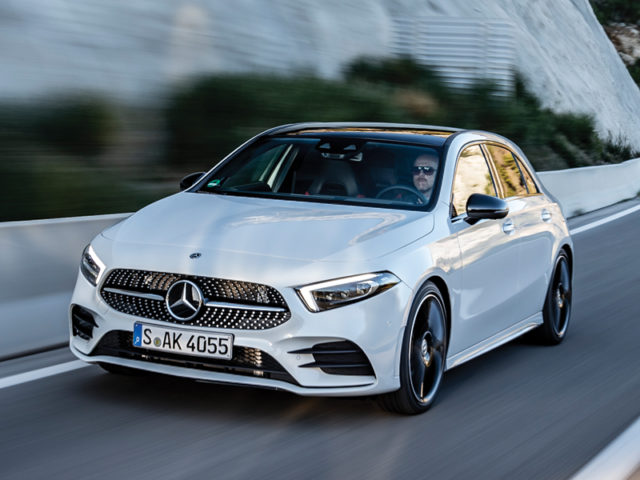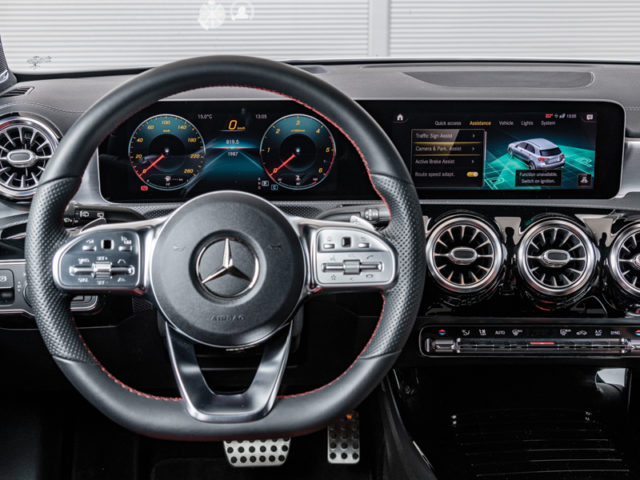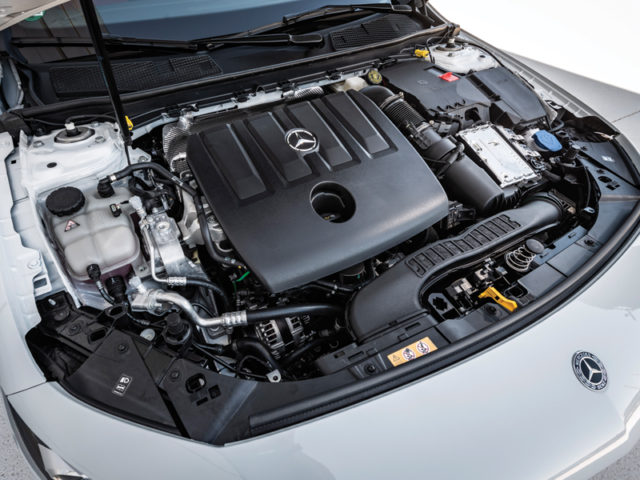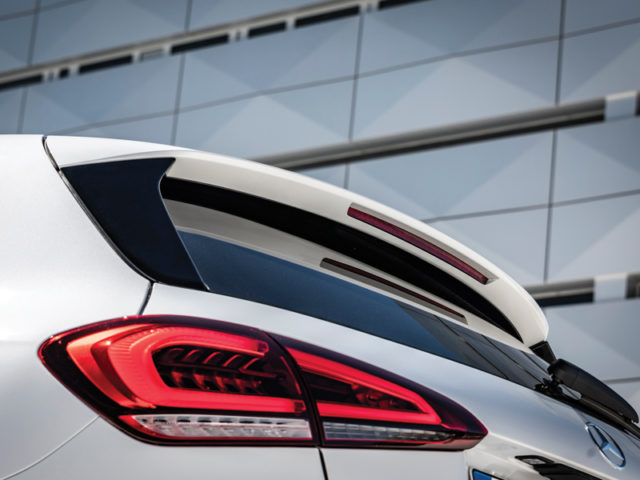First Drive: Mercedes-Benz A-Class
Already a cornerstone of the range, the new A-Class feels a cut above its rivals, says Alex Grant.
SECTOR Lower Medium PRICE €31,000-€40,000 FUEL 4.1-6.9l/100km CO2 108-149g/km
For all the lure of its premium badge, the A-Class never really found its place until, in 2012, Mercedes-Benz reinvented its compact MPV as a sporty hatchback. This was the car buyers had wanted; stylish, tech-rich, with the residuals and efficiency to put it within reach of company car buyers. And it hit the ground running.
Six years on, it’s part of a five-model compact car range and a cornerstone of the global line-up. Last year, 620,000 units, or a quarter of the brand’s total volume, were on the A-Class platform. A-Class drivers are, on average, 10 years younger than its predecessor and 60% are new to Mercedes-Benz, while the next generation of small cars will include eight models. This is the first.
There’s no reinvention this time. It’s new from the ground up, and marginally larger, but focused on addressing the old car’s weaker points rather than starting again. So there’s a noticeable increase in passenger space inside – especially in the back – and the boot has an extra carry-on bag of volume, with two-piece rear lamps that no longer cut into the boot opening. The pillars are reprofiled to improve driver visibility, though it’s still a little gloomy in the back.
Ride comfort, which was never the old car’s strongest point, was harder to judge at the launch. The test cars were equipped with optional adaptive suspension, which wasn’t overly supple when set to Comfort, while Sport found imperfections in well-surfaced roads. Most markets will get fixed-rate sport suspension, and less favourable surfaces to deal with, while the more sophisticated multi-link rear axle fitted to the old car will only come with AMG Line versions this time, to offset the effects of larger wheels. That’s likely to give lower-spec versions a more unsettled ride.
A-Class customers tend to opt for high trim levels, so AMG-styled versions are likely to continue to be popular with the new car. With its unique bodykit, single-piece sport seats and 18-inch wheels, it’s a marked step up from the plainer, and very similar looking, low and mid-level trims. All versions include satellite navigation and digital instruments in one sweeping, glass-covered binnacle, with the option to add Executive and Premium packs to spec them up to larger screens, but the only standard-fit leather upholstery is a man-made alternative.
It’s impressive otherwise, though. The cabin is fit for an executive car, beautifully built and with infinitely changeable display and lighting options, plus the heavily customisable infotainment homescreen, with Alexa-like “Hey Mercedes…” voice commands to please the tech-savvy. Novelties aside, navigation which can overlay directions and house numbers over a live image from the forward-facing camera is a highlight, but it’s a pricey option.
The A-Class can also be integrated with Mercedes-Benz’s multi-brand fleet management system, or shared via a smartphone app based on the Car2Go platform, though the latter relies on leaving a deactivated key in the car, unlike similar rivals.
There are three engines at launch; the big-selling 1.5-litre diesel, upgraded to 116hp and fitted with AdBlue injection, and petrols at 163hp and 225hp, all fitted with seven-speed automatic gearboxes. The small diesel remains a willing performer, if a little noisy and prone to buzzing through the cabin at idle, but the 150hp 2.0-litre diesel from the E-Class is likely to follow. Also worth noting, all versions now feature 43-litre fuel tanks instead of 50 litres in the outgoing car, which could be a frustrating issue for long-distance drivers.
Signs are, though, that they’d want for little else. Having found its place, the A-Class has matured into a very desirable, well-rounded entry point to the range.
What we think
The A-Class has all the bells and whistles to attract young drivers, and some genuinely useful technology for fleets too. With more compact cars en route, and an EV in the pipeline, it feels it’s in a good place to build on 2012’s well-targeted reinvention.
Key fleet model
Mercedes-Benz A 180 D AMG Line






